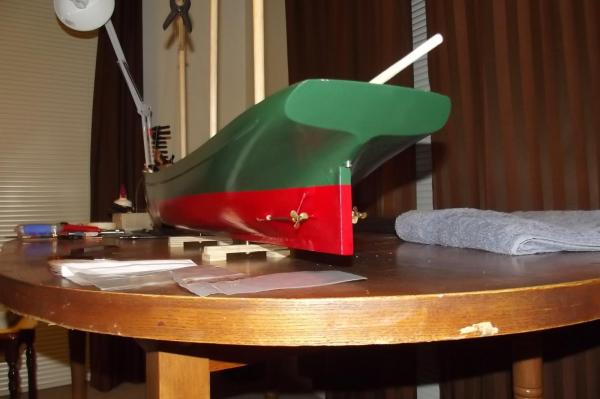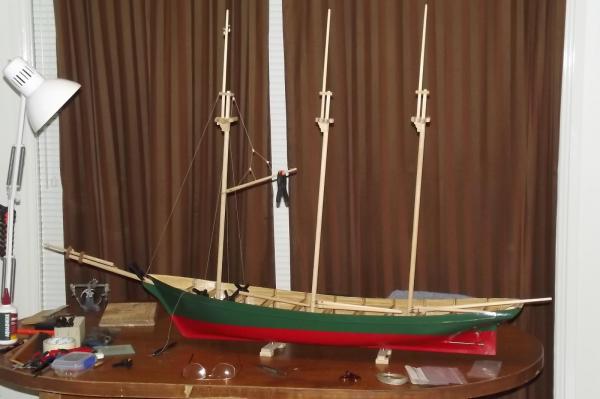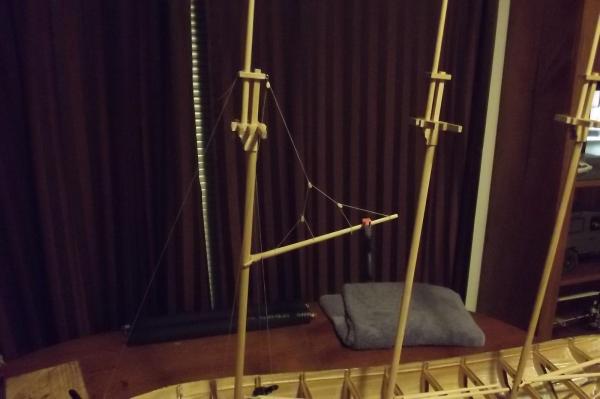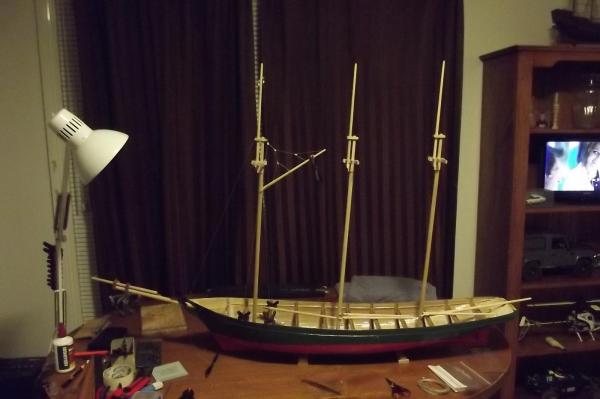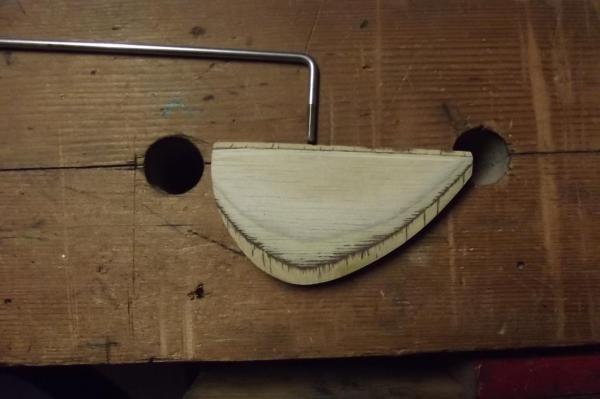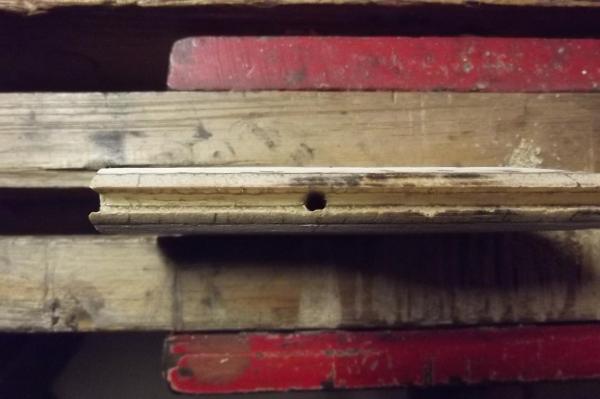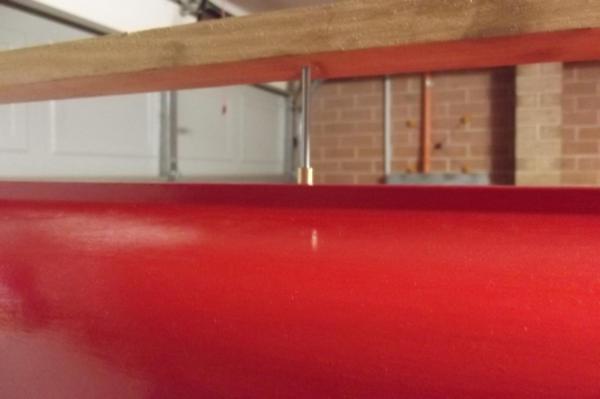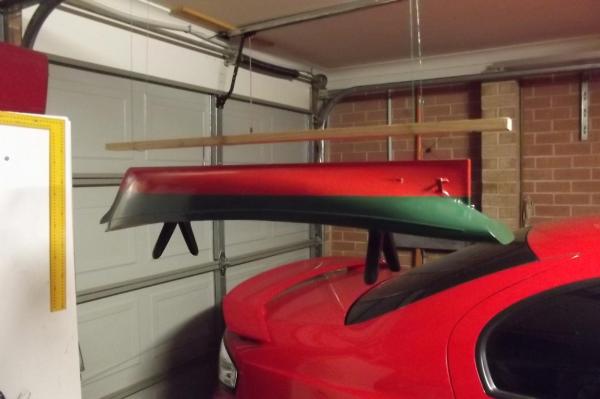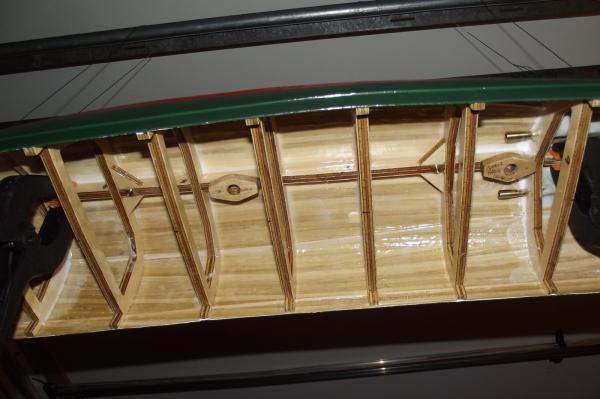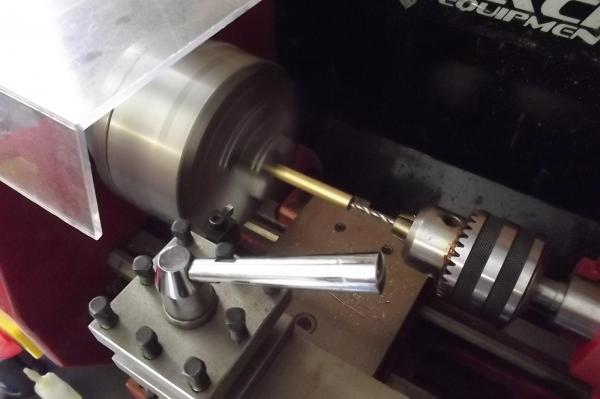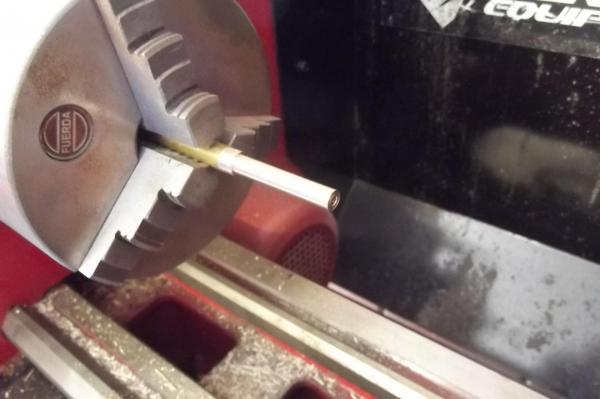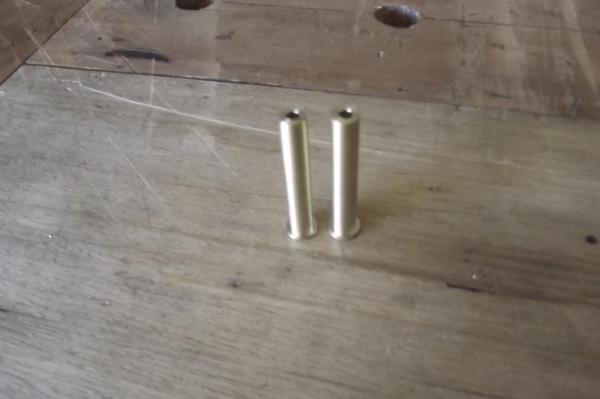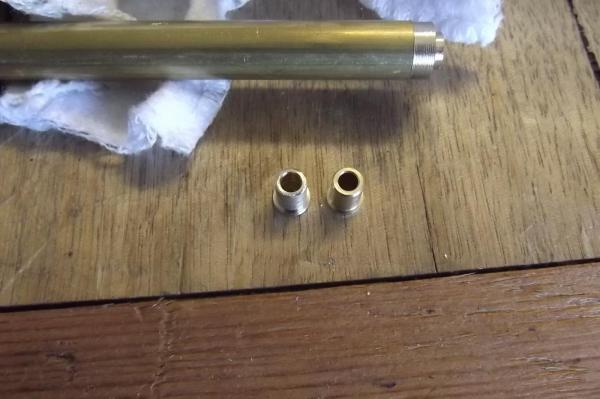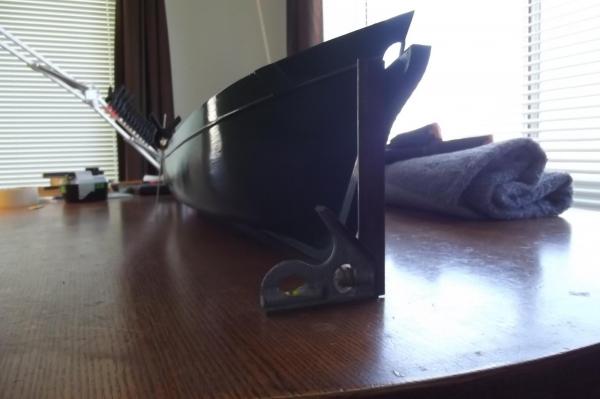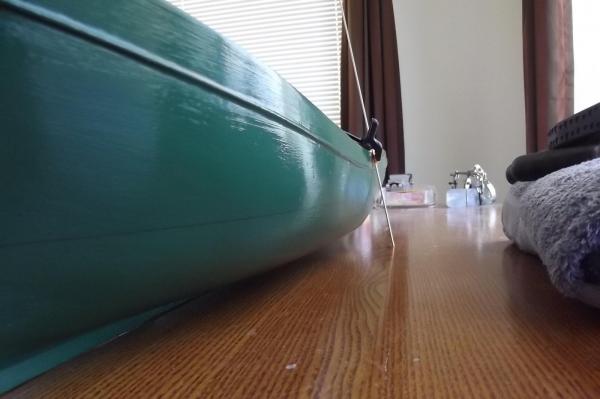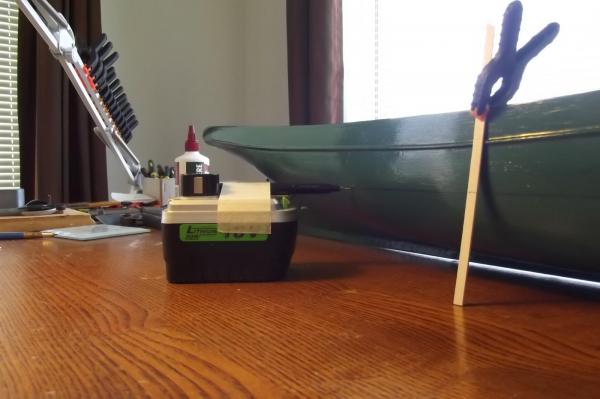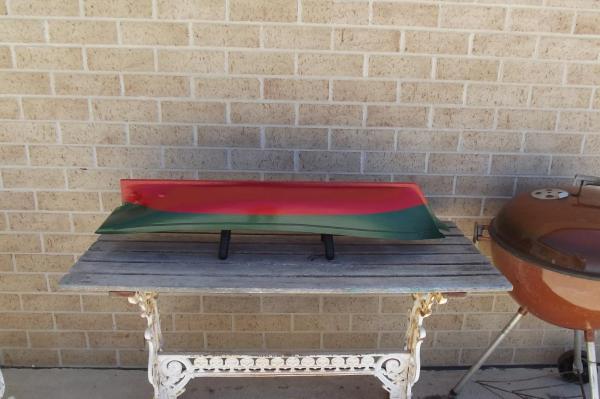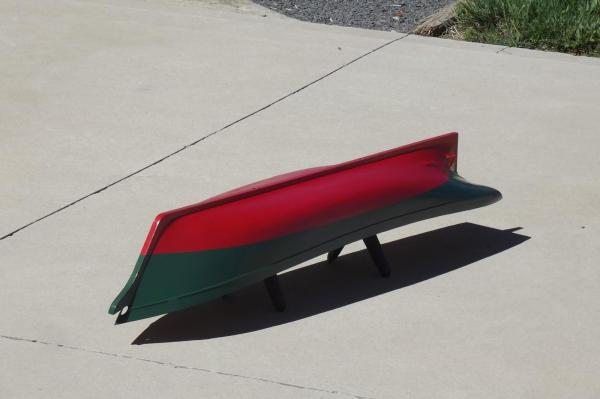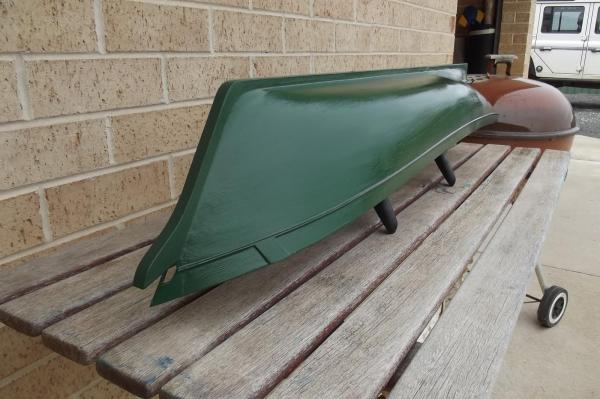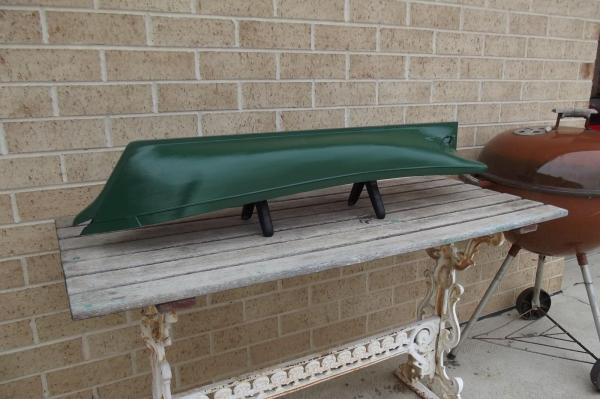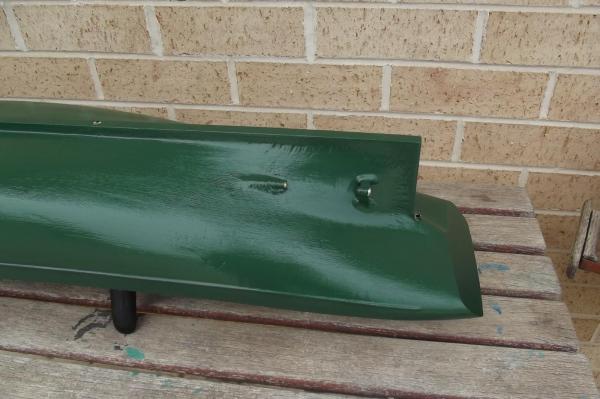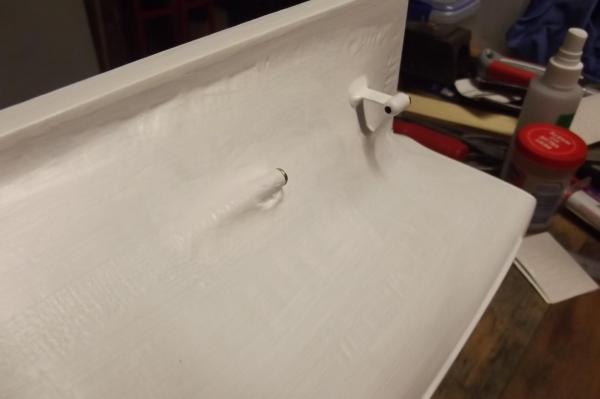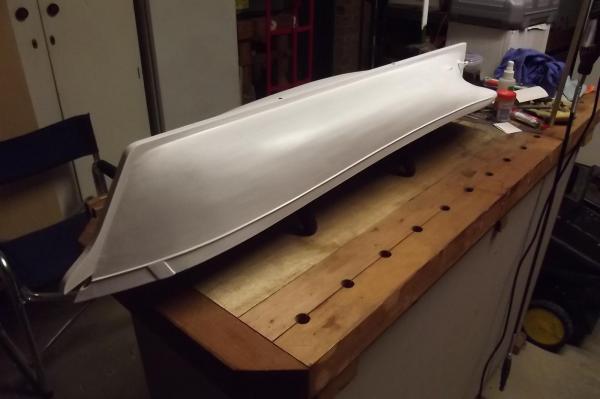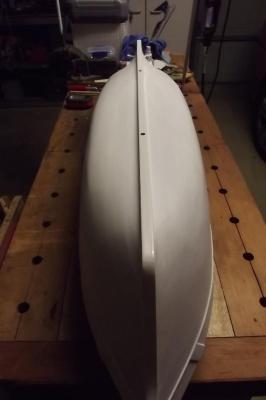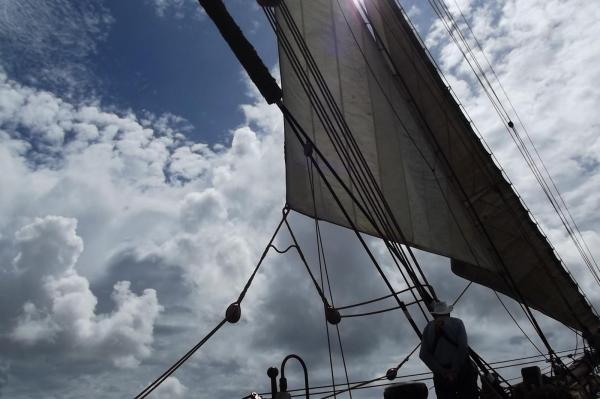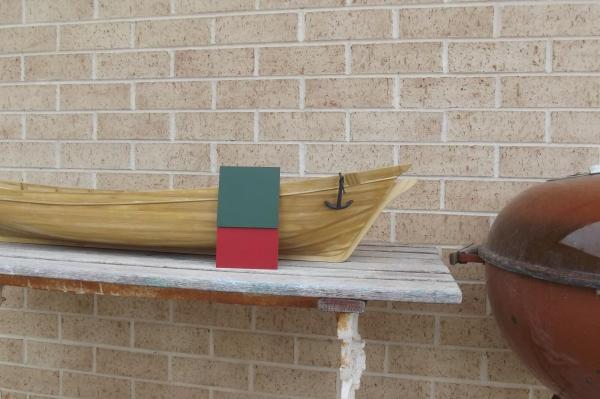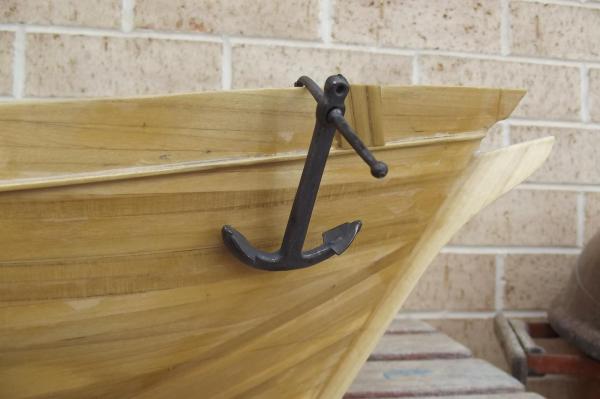-
Posts
1,284 -
Joined
-
Last visited
Content Type
Profiles
Forums
Gallery
Events
Everything posted by Bedford
-
Thanks guys. The input and encouragement keeps us all going. Floyd I have thought about that a lot and think I have it all sorted and should be able to control the sail cloth as the gaf lowers. My theory on how to do this was confirmed when I sailed aboard James Craig, where posible I do it the way it was done and I'm hopeful that it will work. She will carry tops'ls, as Jerry said earlier the gaf just becomes part of the whole sail and the tops are controlled by the sails below but they too will be set by remote. The fact that there will be a bit of running rigging on one side of them shouldn't pose to much or a problem as it will move with them. Again I am not out for speed or performance, rather grace and style. If all else fails and I can't get the sails to come down the way I want them to then at least I can motor out and then raise them, only lowering them when she makes birth. I set myself these challenges because as Bob will appreciate, I love a mechanical challenge !
-
That's it Michael. When I say "A working model" that's what I mean. I have the sheets pretty well worked out, again it means stand-off scale because as Jerry said "you can't put trained squirrels aboard" I have found a 12 turn sail winch servo which will be ideal for raising the sails as I will only need a 32mm drum so once again the plan is for all servos to go in the deck houses which means I can just glue down the deck for the most part as I should never have to get in there. Without a sail on it the gaf raises from the rear due to the weight at the yoke so I will have to make sails before being able to test it properly and iron out the kinks. It will be an added challenge, makes me use the grey matter !
-
A little bit of progress. Sometimes when I catch a glimpse of her in the corner of my eye, with the masts standing, she looks like the real thing in for a refit. First a little stern shot, I think the props are a tad small so I might have to go the 25mm ones. See if you can work out what I am planning for her. Some may think I'm mad but it's what I do.
-
Bob, she has beautiful lines, I'm enjoying this.
- 420 replies
-
Michael, where needed I will buy decent quality tools and equipment. I know which things need to be top quailty and which can be decent, I shy away from cheap stuff as it always lets you down. With some things though I know that improvisation is the way to go and there is always something around to make a temporary waterline marker with.
-
I have tapped the keel nuts and epoxied them in, so as not to waste too much epoxy I made the rudder too and epoxied the rudder post into it and coated the wood in epoxy. I needed to make sure the keel nuts would set square to the keel so I drilled two holes in a piece of timber at the same spacing and organised some wires to suspend that with the boat hanging below, this should ensure they are square. I'm flamin' glad it is a lot cooler than when I did the last lot of epoxy work, the keel nuts fell out when I was trying to screw the bolts into them to hang it so I had to dive in with fingers and got epoxy all over them in the process of refitting them, thankfully I had plenty of time to get it all sorted before the epoxy started going off. Did I mention that I LOVE alcohol ! yes that kind too but I mean the isopropyl alcohol, it makes cleaning up an epoxy drama so easy. I am sipping a very nice scotch at the moment too The steel shaft goes into the groove machined in the rudder and the right angle section goes into the hole in the groove, should be plain to see I think, I have done this in the past with nitro speed boats so I reckon it should be more than strong enough for a schooner. Not sure if I will bother with false brass hinges as they just mean more holes in the hull. The brass keel nuts are long enough that they protrude beyond the keel. Two reasons, on display they will be the pedestals it rests on and more importantly, when trying to mount the sailing keel it would be hard to get the screws to line up with the holes when working underneath the hull but I will drill holes in the keel that will accept the nuts so they act as dowells. That should make fitting the keel much easier. In this pic you can see the braces I fitted between the keel and ribs adjacent to the keel nuts to take any lateral strain the keel imposes during sailing.
-
There you go, it was worth posting the waterline marking process! Thanks Robbyn, it is almost ready to be bolted down by the keel and never go upside down again. Yes, the lathe / mill is an excellent addition to any model shipyard, I made the masts on it and now brass fittings, who knows what will come off it next. Steve
-
I am no fitter/machinist but I love having a lathe ! I have turned the blind nuts that will go through the keel to mount the sailing keel, they will also be used to mount her on display. All I have to do now is get a tap and cut the threads and I can epoxy them in. Since I bent a prop shaft and had to order a full replacement assembly I now have one set left over albeit useless for driving a boat. It is however quite good enough for steering a boat. I have cut the outer tube quite short and epoxied it through the keel and I will use the bent shaft to attach the rudder to after bending it some more. I have two bearings for it but the one that would go inside the boat is too long and would put the tiller above deck so I turned a second outer bearing which will make it all nice and neat. In spite of appearances the hole through both bushes is the same, 3mm. Yes you can easily tell which one I made by the finish but re-read the first sentence in this post
-
Even more paint! The red is a bit more, well, RED than I expected but we will wait and see what she looks like after it bakes dry for a day or two. I am including a few pics of how I marked the water line on her, I know most of us know how but it may be of help to someone some day and I know I didn't need to mark the waterline on the wooden prop, that was just were I went first so I could measure and confirm my jig was correct. I have marked the waterline at my sailing waterline rather than the fully loaded waterline which would be 6 or 7mm higher, I did this for asthetics and practicality for when I come to final setup.
-
She's going to be a nice little boat John and since you can work around that error it is a case of "What error"? Steve
- 745 replies
-
- francis pritt
- mission ship
-
(and 1 more)
Tagged with:
-
Looks great, have you started a new ship this year yet?
- 153 replies
-
- model shipways
- bounty launch
-
(and 1 more)
Tagged with:
-
As promised, the timber grain is gone. Two coats of primer have been applied. Oh, I have also attached the outer bearings for the prop shafts, drilled the holes in the keel for mounting the sailing keel and mounted the rudder tube. In the close-up of the stern section you can see where the edges of the fibre glass are obvious, it looks worse in the pic, you just can't get rid of that without heaps of resin coats and sanding and that would have been difficult to do in this area without wearing through the edges of the keel etc, besides it is on the bottom so I can live with it.
-
That's some good info Jerry, thank you very much. Space is not an issue in this build, the beam about 100mm behind the fore mast is 200mm so I have plenty of room to play. Like you I am thinking that last one looks good but if it doesn't give enough travel what about incorporating the Jimie James idea to some extent. That would increase the pull. A high torque servo should handle the job I would imagine, especially if the Jimie James idea means a shorter arm on the servo.
-
I have calculated the sail area today, maybe not dead accurate but it would be pretty close to 510125mmsq That is just over 0.51 metres squared or 791 square inches so a bit more sail than you carry from memory Floyd. However my centre of force is much lower than that of a modern yacht style of rig and in stronger winds I can reduce sail. Sails = 495 in sq Top sails = 144 in sq Stay sails = 152 in sq So I can run with sails - 495 Sails and top sails - 639 Sails and stay sails - 647 All sails - 791 I am no sailor but I would imagine the top sails would be used only in lighter winds, depending on how she handles the wind. They will not be able to be set without the mains up first.
-
Thanks Jerry, that is food for thought. This is basically what I am going for, I had not considered sliding the sheet as you suggest but it is something to remember. I am really going for the correct method of having two sheets which then run to either side of the hull as you suggest. The rest of the sails will most likely be run the way Floyds are.
-
Thanks for the pics Floyd. It is interesting how you have your sheets set up, you are doubling the pull by way of anchoring the ends of the sheets to the hull. This really shows the torque of the servo. The more I think about it the more I realise I am going to have to have two channels for the sails because I want the stay sails to operate properly. One channel can operate the sails and top sails the same way you do but the stay sails will require a two way pull, ie:- each will have two sheets which will need to be attached to opposite sides of the servo horn. There is a pic of how it works early on, I took it on board the james Craig. Welcome back Robbyn, hope you had a good xmas. Yes the float test was brilliant if quite daunting. It went pretty much as expected though. The two big things panned out for me, no water ingress at all and I know how heavy she can be, it is as simple as she can displace a lot more water than she will weigh therefore she will float. If she weighed more than the water she can displace she would sink. I didn't want her to ride too low in the water because there is not a lot of freeboard so as she heels over in a breeze the deck could end up wet and I want to try and avoid that. The odd bit of water on the deck will be ok but I don't want it in the water constantly. I am off to Sydney for a few days to see dad so no progress other than thinking for that time. I will take the schooner and show him as he is quite interested in it. He has built "Le Hussard" and when I built the "Schooner for Port Jackson" I reduced the plans to fit on an a4 page and faxed them to him jokingly suggesting that should be his next build. Next time I went to sydney he had made it in that size, not bad I thought.
-
So this is the schooner Floyd referred to http://www.modelsailboat.com/rc-sch1.html She is similar in length, masts are of similar height so sail area is going to be similar although mine will be spread over 3 masts and 3 stay sails. This is 2.72Kg mine will be 5.7Kg This is a very interesting comparison. Obviously mine will be slower because it has to displace more water as it moves but that's fine, it really makes me wonder about that sailing keel though. I reckon I could almost get away with no additional keel at all and just have all the ballast lining the sides of the hull. I won't though. I know I need a bit of keel below for lateral stability or she will just blow sideways across the lake, maybe a lighter folded steel winged keel....... Damn you Floyd, giving me so much to think about Seriously though this is getting very interesting, I am now confident that one servo will easily handle the sails so it is getting simpler.
-
Floyd, thanks for the input. To add a link just highlight the web address at the top of your screen then copy and paste it into your reply. If you go back to my first post you will see the rig I am aiming for. The sails will have a boom and a gaf and the top sails will attach to the gaf so it should act as one sail. The stay sails will not be club footed but I have seen how they work and I think it should be fairly easy to replicate. I've seen a ship on here that does it and it works well. Remember that if I ever have a problem coming about because of sails I can just hit the motors for a few seconds. My aim is to have her work reasonably close to the real thing, speed is not the issue. Having said that I am keenly reading and thinking about what you are saying, you know more about this than I do. I will watch the vid and see what I learn. I can always change the rig once it is made if it doesn't work well enough. John, Yes Brunswick Green, an old standard. I had it in my head from the word go and I think it will be perfect, yes it is readily available from bunnings but the red is not, it has to be mixed and while I know Bunnings can do that I don't trust their random staff to know what primer I need to make it take properly to the epoxy finish. I know I can rely on the guys at my local trade paint store. AVS, she was always going to be painted, I can't stain her now anyway, nothing can soak into that timber now. She is sealed well and truly. Bob, as with Floyd, keep it coming. I take it all on board and work with it. I need to find my sail area, I think I worked it out before.
-
I got my replacement prop shaft today along with the correct type of anchors, I like the anchors they look good and weathered. Take a good long look at the carpentry skill in the planking because this is the last time you will see it. The colour scheme Now I just need to find somewhere open to get said paint. All the trade places closed at midday because it is xmas eve, Hope they re-open before the new year.
-
Good info Floyd, thanks. I will have to work out how much throw I need and see if the horn type servo will do the job, it would make it a lot simpler. I could just attach sheets at the correct point along the length of the horn to get the correct ratio of throw. I wasn't sure those servos would be powerful enough. I will appreciate all info you can give me in this part of the build Floyd, thanks! So much to think about !!!
-
Oh to have such a pond. I would have no dramas if that where the case. I could run all the sails from the one winch servo, such as this. http://radiosailingshop.com.au/index.php?main_page=index&cPath=16&zenid=5215e44b516b53f9e9977c2097bb744f Graupner also have a good sail winch servo but it appears to be no longer available. I can turn drums to the sizes I need so as long as I work out all the pulls exactly I should be able to make one servo control them all. I may take an idea from a model of the Banterer I have seen on here whereby the servo is mounted in one end of the hull with the axis on the horizontal so it can drive a winching assembly that runs the length of the ship. Being a square rigger that system is far more complicated than it sounds but my schooner should be quite straight forward. I got a few goodies in the mail today, pics later.
About us
Modelshipworld - Advancing Ship Modeling through Research
SSL Secured
Your security is important for us so this Website is SSL-Secured
NRG Mailing Address
Nautical Research Guild
237 South Lincoln Street
Westmont IL, 60559-1917
Model Ship World ® and the MSW logo are Registered Trademarks, and belong to the Nautical Research Guild (United States Patent and Trademark Office: No. 6,929,264 & No. 6,929,274, registered Dec. 20, 2022)
Helpful Links
About the NRG
If you enjoy building ship models that are historically accurate as well as beautiful, then The Nautical Research Guild (NRG) is just right for you.
The Guild is a non-profit educational organization whose mission is to “Advance Ship Modeling Through Research”. We provide support to our members in their efforts to raise the quality of their model ships.
The Nautical Research Guild has published our world-renowned quarterly magazine, The Nautical Research Journal, since 1955. The pages of the Journal are full of articles by accomplished ship modelers who show you how they create those exquisite details on their models, and by maritime historians who show you the correct details to build. The Journal is available in both print and digital editions. Go to the NRG web site (www.thenrg.org) to download a complimentary digital copy of the Journal. The NRG also publishes plan sets, books and compilations of back issues of the Journal and the former Ships in Scale and Model Ship Builder magazines.




